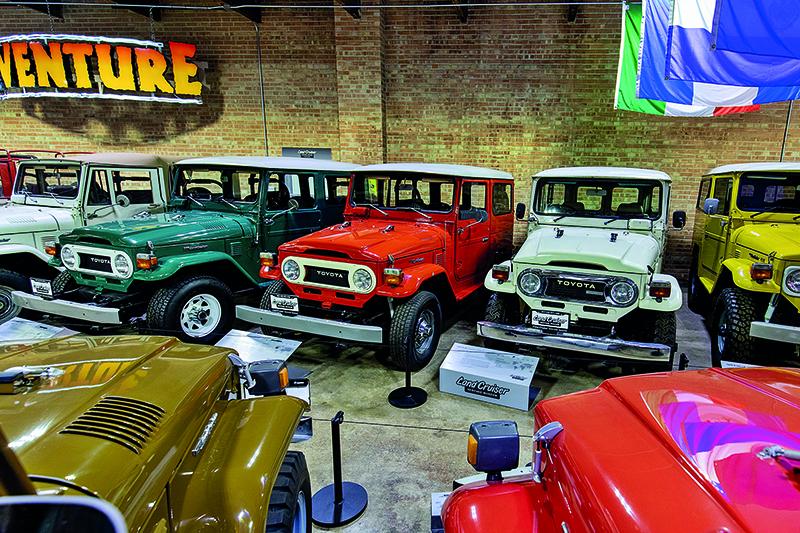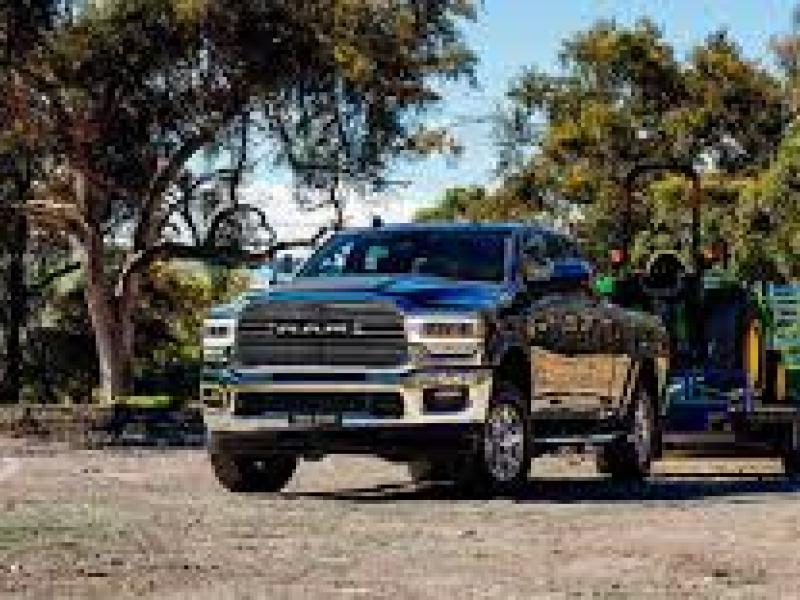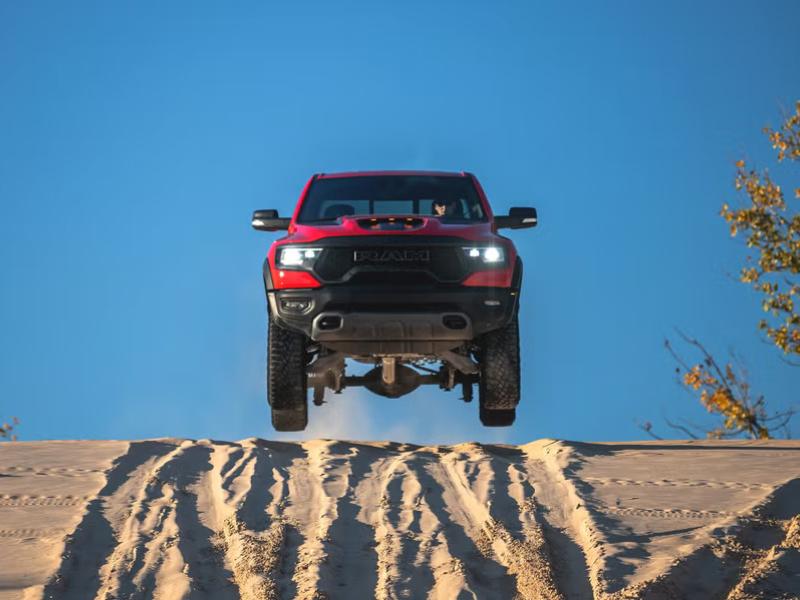This is not the first place anyone would go looking for a museum dedicated to Toyota’s mighty Land Cruisers, and yet there it is. The mission of the Land Cruiser Heritage Museum is to preserve and celebrate the history of the Toyota Land Cruiser and to inspire adventure.
The goal of the museum is to acquire and display one of every model of Land Cruiser ever produced, which is well over 100 models. Private collectors and Land Cruiser enthusiasts have loaned the museum vehicles, vintage owner’s manuals, more than 1000 scale models, tool kits, marketing materials, memorabilia, and artwork, all of which are on display.
The Land Cruiser Heritage Museum is located in Salt Lake City, Utah, just six minutes from the Salt Lake International airport.
Stars of the collection include a 1977 FJ40, a 1977 FJ55, a 1984 FJ60, a 1991 FJ80, and a 2004 UZJ100. Stellar SUVs with a legendary pedigree.
1977 Toyota Land Cruiser FJ40
The most legendary of Land Cruisers, there’s a lot to love about the FJ40. This 1977 model features the same 2F engine as its FJ55 station wagon counterpart, boasting the same 100kW (135bhp) and 284Nm when new.
In a lighter vehicle, the engine indeed was (comparatively) sprightly and zippy though the transmission’s short gears limit cruising speed.
The FJ40’s wheelbase had a 406mm shorter wheelbase than its contemporary.
Comfortable on the road compared to the equivalent Land Rover, the dirt is where the FJ40 was at home.
Those nimble proportions make tight corners simple, even with four-wheel drive engaged. The steering was a bit vague and slow but that worked to advantage off-tarmac.
The FJ40 rode more roughly off-road than the FJ55, but there’s no denying the SUV’s easygoing charm.
1977 Toyota Land Cruiser FJ55
The company’s first true foray into four-door SUVs. Nicknamed the Iron Pig, the FJ55 is powered by a 4.2l inline six cylinder engine that produced 100kW (135bhp) and 284Nm when new.
But the engine’s low-revving torque means the FJ55 can cruise all day long at 100km/h, even in headwinds and going up hills.
Despite its solid front and rear axles and four-corner leaf springs, the FJ55 was a soft ride in the rough and its fully boxed frame provides a stout platform for the wagon body.
1984 Toyota Land Cruiser FJ60
The advent of the 1980 60-Series Land Cruiser was the end of an era for the off-road family. The FJ60 replaced the FJ55 as Toyota’s off-road station wagon, pitched to go up against the older Jeep Cherokee and perhaps Wagoneer.
In 1983, the company stopped selling the FJ40 in the US. That meant that all Land Cruisers sold in the U.S. from 1984 on were luxury-minded family trucksters, no longer the rough-and-tumble, removable-roofed playthings they were before. But while the SUV family grew and became more comfortable, it also poured on capability and ruggedness.
The Land Cruiser Heritage Museum’s 1984 FJ60 again features the same 2F straight-six engine as the FJ40 and FJ55. Weighing about 200 pounds more than the FJ55, the 1984 Land Cruiser was less responsive to full-throttle blasts. However, it was far more tractable on-road thanks to excellent gearing of its four-speed manual gearbox. Solid axles and leaf springs can be found front and rear, but as with its predecessor, this vintage Land Cruiser offered plenty of on-road comfort and off-road flex.
One of the best things about the FJ60 (and most cars built before 1995 or so) is its incredible visibility. Narrow pillars all around and a low beltline make it easy to spot obstacles off-road or place the truck in traffic. Safety? Airbags? Antilock brakes? Hill descent control? Pfffft. Y’all want safety, ya buy a Volvo.
1991 Toyota Land Cruiser FJ80
This 1991 Land Cruiser is an exercise in revisionist nostalgia. Boasting a fuel-injected 4.0l inline six-cylinder engine that was first found in the FJ62, the FJ80 has to haul around 2041kg with just 115kW and 298Nm.
Paired to the engine is a relatively lethargic four-speed automatic transmission, making passing and merging manoeuvres a challenge.
Once up to speed, the FJ80’s smoother aerodynamics worked in its favour to maintain speed easily. Stopping distances were abysmal, which was comical in the parking lot and kind of scary on the open road.
When the FJ80 was introduced for the 1991 model year, Land Cruiser owners were genteel folk who still wanted the best in off-road capability.
Solid axles are found under the smoother bodywork, with coil springs up front instead of leaf packs.
Full-time four-wheel drive with a selectable low range ensures good traction in all conditions. A locking centre differential was standard on the FJ80, and front and rear lockers were available. The 1991 Land Cruiser offered a plush ride on-road and all-but-unstoppable capability on the trail. A new 4.5l inline six-cylinder engine came on board for 1993, improving drivability with 158kW and 372Nm of torque. So equipped, this generation is known as the FZJ80.
The interior is a 1990s triumph of near-perfect Toyota ergonomics, wrapped in rugged (but beautiful) woollen cloth upholstery. Fold-up third row jump seats expand passenger capacity to seven, with sliding windows back there to alleviate claustrophobia and carsickness.
2004 Toyota Land Cruiser UZJ100
While the 1991 FJ80 introduced coil springs to the Land Cruiser line, it was the 1998 100-Series that brought modern comfort to the brand. Land Cruiser-first independent front suspension used torsion-bar springs, while the solid rear axle was now hung underneath coils instead of leaves.
The 100-Series was also the first LC to drop the inline six-cylinder engine for a 4.7l V8 (codenamed UZ). 1998-2002 models used a four-speed gearbox and produced 171kW and 433Nm, while 2003-2005 models had a five-speed transmission and 175kW. The V8 received variable valve timing for 2006 and 2007, boosting output to 205kW and 450Nm.
On-road comfort was first-rate, with a natural, upright seating position in the first two rows and a velvety-smooth ride from the contemporary suspension.
Off-road, it was capable as its predecessors thanks to a locking centre differential, narrow proportions, small overhangs and commendable ground clearance. The full-time four-wheel-drive system again featured a selectable low range, and there was plenty of articulation to keep all four wheels planted.
The museum’s 100 Series had soft, supple leather and a modern interior.
For many, the 100-Series Land Cruiser is the sweet spot in its family lineage, offering the comfort and control of many modern SUVs without sacrificing any off-road capability.







